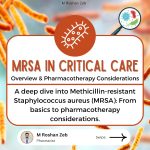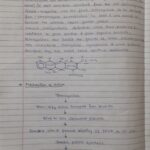Pharmacy Exam
Guide
Step I
Practical Book
st
1 Edition
(p1c6)
All rights reserved. This book is protected by copyright. No part of this book may be
reproduced or transmitted in any form or by any means, including as photocopies or scanned-
in or other electronic copies, or utilized by any information storage and retrieval system
without written permission from the copyright owner, except for brief quotations embodied in
critical articles and reviews.
DISCLAIMER
Care has been taken to confirm the accuracy of the information present and to describe
generally accepted practices. However, the authors, editors, and publisher are not responsible
for errors or omissions or for any consequences from application of the information in this
book and make no warranty, expressed or implied, with respect to the currency,
completeness, or accuracy of the contents of the publication. Application of this information
in a particular situation remains the professional responsibility of the practitioner; the clinical
treatments described and recommended may not be considered absolute and universal
recommendations.
We DO NOT own the rights of the pictures and some context. All rights reserved to their
copyright owner, those context and pictures are just used as a reference in this book.
The authors, editors, and publisher have exerted every effort to ensure that drug selection
and dosage set forth in this text are in accordance with the current recommendations and
practice at the time of publication.
Compiled By:
Abdul Sattar Rashid
Ali Ahsan
Ammara Khalique
Anmol Tahreem
Fareed Ahmed Rang Ali
Hamza Rohail
Laiq Ur Rehman Khan
Mehrab Fatima
Memoon Babar
Muhammad Qasim Yousaf
Ramsha Tahir
Sadia
Salbia Shereen
Sharmeen BaiG
Umair Javaid
Zafeer Naeem
Dedicated to Our Parents
And TeacherS
Acknowledgement
The future belongs to those who believe in the beauty of their
dreams.
The preparation of this book “Pharmacy Exam Guide” was
just a dream of some students of Doctor of Pharmacy,
University of Central Punjab, which could not be fulfill
without the help and support of our teachers and parents.
We appreciate the tireless efforts of Our Teachers who
encouraged us always to achieve our endeavor, no matter,
how hard they can be.
We are much indebted to Our Parents for inspiring and
motivating us to achieve the great goals in life.
PHARMACEUTICS 1
PHARMACEUTICS ……………………………………………………………………………………………………………….5
To Determine Density of Different Liquids at A Given Temperature ………………………………………………. 5
To Determine the Unknown Concentration of Samples by Specific Gravity Method ………………………… 7
To Prepare 1 M, 0.5M and 0.1 M Solutions of HCl and NaOH ………………………………………………………. 11
To Prepare 0.5 and 0.1 Molal Solutions of Sodium Carbonate and Sodium Hydroxide ……………………. 16
To Prepare 0.5 and 0.1 Normal Solutions of Hydrochloric Acid and Sulphuric Acid ………………………… 20
To Purify Benzoic Acid from the Given Impure Sample by Recrystallization Process and Check the
Percentage Purity …………………………………………………………………………………………………………………… 25
Purification of Camphor by Sublimation ……………………………………………………………………………………. 27
To Prepare Acetate Buffer and Check its Buffer Action ……………………………………………………………….. 29
To Determine Particle Size Distribution of Given Powder Samples by Sieving Method……………………. 32
Determine Particle Size of Samples by Microscopy …………………………………………………………………….. 34
To Determine the Solubility of Benzoic Acid in Water and Ethanol at Room Temperature ……………… 39
To Determine the Solubility of Benzoic Acid at Different Temperatures ……………………………………….. 42
To Determine the Bulk Density and Tapped Density of Given Powder ………………………………………….. 45
Determination of Viscosity of Pharmaceutical Products Using Ostwald Viscometer ……………………….. 46
Determination of Unknown Concentration of Samples Using Ostwald Viscometer ………………………… 49
To Determine the Type of Pharmaceutical Emulsions …………………………………………………………………. 53
To Determine the Globules Size of Emulsions by Optical Microscope …………………………………………… 57
To Determine the Surface Tension of Different Solvents …………………………………………………………….. 62
To Determine the Concentration of Unknown Samples by Drop Count Method ……………………………. 64
To Determine the Distribution Coefficient (Partition Coefficient) of Benzoic Acid between Benzene and
Water …………………………………………………………………………………………………………………………………… 69
Theory ………………………………………………………………………………………………………………………………….. 69
To Determine the Distribution Coefficient (Partition Coefficient) of Benzoic Acid between Water and
Carbon Tetrachloride ……………………………………………………………………………………………………………… 72
Theory ………………………………………………………………………………………………………………………………….. 72
Determination of Critical Micelle Concentration of (CMC)Tween 80 by Surface Tension Measurement
……………………………………………………………………………………………………………………………………………. 75
Study of Acetyl Salicylic Acid Hydrolysis ……………………………………………………………………………………. 78
Purification of Water by Simple Distillation ……………………………………………………………………………….. 81
BIOCHEMISTRY ……………………………………………………………………………………………………………….. 84
Qualitative Analysis of Carbohydrates ………………………………………………………………………………………. 84
Pharmacy Exam Guide
PHARMACEUTICS 2
Qualitative Analysis of Glucose ………………………………………………………………………………………………… 86
Qualitative Analysis of Fructose ……………………………………………………………………………………………….. 88
Qualitative Analysis of Sucrose ………………………………………………………………………………………………… 90
Qualitative Analysis of Lactose ………………………………………………………………………………………………… 93
Qualitative analysis of Maltose ………………………………………………………………………………………………… 95
Qualitative Analysis of Galactose ……………………………………………………………………………………………… 97
Qualitative Analysis of Starch ………………………………………………………………………………………………….. 99
Hydrolysis of starch: …………………………………………………………………………………………………………… 101
Qualitative Analysis of Sprite …………………………………………………………………………………………………. 103
Hydrolysis of sprite: ……………………………………………………………………………………………………………. 104
Qualitative Analysis of Biscuits ………………………………………………………………………………………………. 105
Hydrolysis of solution: ……………………………………………………………………………………………………….. 106
Qualitative Analysis of Ketchup ……………………………………………………………………………………………… 108
Qualitative Analysis of Egg White …………………………………………………………………………………………… 111
Qualitative Analysis of Egg Yolk ……………………………………………………………………………………………… 114
Qualitative Analysis of Egg Shell …………………………………………………………………………………………….. 117
To Compare Different Reducing Sugars by Performing Osazone Test …………………………………………. 118
To Study Conversion of Starch into Glucose …………………………………………………………………………….. 121
Qualitative Analysis of Lipids in the Given Sample …………………………………………………………………… 123
Qualitative Analysis of Lipids in the Given Sample ……………………………………………………………………. 126
Qualitative Analysis of Bread Crumbs ……………………………………………………………………………………… 129
Qualitative Analysis of Bread Crust …………………………………………………………………………………………. 131
Qualitative Analysis of Milk……………………………………………………………………………………………………. 134
Qualitative Analysis of lipids in Given Sample ………………………………………………………………………….. 137
To Estimate Glucose in Urine by Benedicts Quantitative Method ………………………………………………. 139
Qualitative Analysis of Mineral Ions ……………………………………………………………………………………….. 142
Biological Importance of Mineral Ions …………………………………………………………………………………….. 146
CHEMISTRY …………………………………………………………………………………………………………………… 147
Qualitative Analysis of Urea …………………………………………………………………………………………………… 147
Qualitative Analysis of Thiourea …………………………………………………………………………………………….. 149
Qualitative Analysis of Benzoic Acid ……………………………………………………………………………………….. 152
Qualitative Analysis of Phthalic Acid ……………………………………………………………………………………….. 155
Pharmacy Exam Guide
PHARMACEUTICS 3
Qualitative Analysis of Tartaric Acid ……………………………………………………………………………………….. 158
Qualitativs Analysis of Cinnamic Acid ……………………………………………………………………………………… 162
Qualitative Analysis of Citric Acid …………………………………………………………………………………………… 166
Qualitative Analysis of Malic Acid …………………………………………………………………………………………… 170
Qualitative Analysis of Salicylic Acid ……………………………………………………………………………………….. 173
Qualitative Analysis of Acetyl Salicylic Acid ……………………………………………………………………………… 177
Qualitative Analysis of Succinic Acid ……………………………………………………………………………………….. 180
Qualitative Analysis of Benzamide ………………………………………………………………………………………….. 183
Qualitative Analysis of Acetanilide …………………………………………………………………………………………. 186
Qualitative Analysis of Glucose ………………………………………………………………………………………………. 189
Qualitative Analysis of Fructose ……………………………………………………………………………………………… 192
Qualitative Analysis of Maltose ……………………………………………………………………………………………… 195
Qualitative Analysis of Sucrose ………………………………………………………………………………………………. 198
Melting Point of All the Compound ………………………………………………………………………………………… 202
Confirmatory Test of All Compound ……………………………………………………………………………………….. 203
Summary …………………………………………………………………………………………………………………………….. 206
To Prepare Acetanilide ………………………………………………………………………………………………………….. 207
To Prepare Acetyl Salicylic Acid (Aspirin) …………………………………………………………………………………. 210
To Prepare Methyl Salicylate …………………………………………………………………………………………………. 213
To Prepare Acetaminophen (Paracetamol) ……………………………………………………………………………… 216
To Prepare Nitrophenol ………………………………………………………………………………………………………… 219
To Prepare Benzoic Acid ……………………………………………………………………………………………………….. 222
To Prepare Salicylic Acid from Wintergreen Oil ………………………………………………………………………… 225
To Determine % Purity of the Given Sample of Benzoic Acid ……………………………………………………… 228
To Determine Specific Rotation of Given Compounds ………………………………………………………………. 230
PHYSIOLOGY …………………………………………………………………………………………………………………. 233
To Study Parts of Microscope ………………………………………………………………………………………………… 233
Study of Neubauer’s Chamber ……………………………………………………………………………………………….. 236
Determination of Blood Group ………………………………………………………………………………………………. 239
Determination of Hemoglobin Conc. in Blood Sample by Sahli’s Method ……………………………………. 241
Measurement of Pulse Rate and Maximum Heart Rate …………………………………………………………….. 246
Determination of Bleeding Time …………………………………………………………………………………………….. 248
Pharmacy Exam Guide
PHARMACEUTICS 4
Determination of Clotting Time ……………………………………………………………………………………………… 249
Formation of Blood Film ……………………………………………………………………………………………………….. 250
Result:- ……………………………………………………………………………………………………………………………….. 251
Determination of RBC Count………………………………………………………………………………………………….. 252
Determination of Erythrocyte Sedimentation Rate (ESR)…………………………………………………………… 255
Determination of Blood glucose level ……………………………………………………………………………………… 257
Determination of Body Mass Index ………………………………………………………………………………………… 258
Determination of Normal Body Temperature ………………………………………………………………………….. 259
Determination of Blood Pressure …………………………………………………………………………………………… 261
Leukocyte Count by Hemocytometer ……………………………………………………………………………………… 266
HISTOLOGY …………………………………………………………………………………………………………………… 269
Introduction to Epithelia ……………………………………………………………………………………………………….. 269
Histological Study of Muscle ………………………………………………………………………………………………….. 278
Histology of Liver …………………………………………………………………………………………………………………. 281
Histology of Tongue ……………………………………………………………………………………………………………… 285
Histology of Jejunum …………………………………………………………………………………………………………….. 288
Histology of Large Intestine …………………………………………………………………………………………………… 289
Histology of Appendix …………………………………………………………………………………………………………… 292
Histological Features of Artery & Vein …………………………………………………………………………………….. 293
Histology of Respiratory System …………………………………………………………………………………………….. 296
Pharmacy Exam Guide
PHARMACEUTICS 5
PHARMACEUTICS
To Determine Density of Different Liquids at A Given Temperature
Aim
To understand the concept of density
To understand its pharmaceutical importance
Theory
Density
It is define as mass per unit volume at a fixed temperature and pressure
It is given by
⁄
Its symbol is ρ (Greek letter rho).
It is measure in g/ml or g/cm3 in CGS.
Measurement:
Equipment used to measure density are:
Pycnometer
Specific gravity bottle hydrometer
Factor
Temperature
Pressure
Concentration
Pharmaceutical Application
To Check Purity of Materials
To Determine unknown concentration
In Pre-Formulation Studies
Biological Research Laboratories
o Cell Density Test
Apparatus Chemical Required
Pycnometer/ Specific gravity bottle Distilled Water
Graduated Cylinder Acetone
Beaker Chloroform
Electric weighing balance Carbon Tetrachloride
Tissue paper / Blotting paper Glycerin
Pharmacy Exam Guide
PHARMACEUTICS 6
Procedure
1. Wash, clean and dry all the glassware as per S.O.P.
2. Calibrate the weighing balance
3. Note the room temperature T.
4. Rinse glassware with acetone to let it dry.
5. Note the volume of pycnometer V.
6. Note the weight (mass) of empty pycnometer W1 or m1 (g)
7. To determine density of water, fill it with water to the rim, apply the stopper, dry it from outside
and note the weight (mass) of pycnometer + water, W2 or m2 (g)
8. Determine the weight of water by W2 –W1
9. Determine density of water by
10. ⁄
11. Fill the pycnometer with the given solutions one by one; find out the weight (mass) of
pycnometer + liquid W3 or m3 (g).
12. Determine the weight of liquid by W3 – W1 (g).
13. Determine the density of different luquids by the same formula.
Precautions
All the apparatus should be cleaned before use
Rinse pycnometer with acetone to let it dry
Before determination of density, rinse pycnometer with the given solution to get accurate
results
Calibrate the balance before use
Note the volume of pycnometer carefully
Remove all air bubbles from the pycnometer before applying stopper.
Observation and Calculation
Room Temperature =
Volume of pycnometer =
Weight of pycnometer =
⁄










